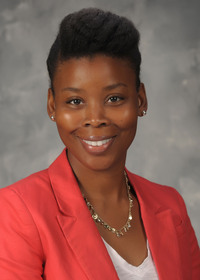Becoming Physically Active
Physical activity is simply moving. It does not always mean doing something strenuous or doing hard work. Think of exercise as something good you are doing for yourself in order to live a healthy, productive life.
Consider activities you enjoy doing that include moving your body. Make everyday lifestyle changes like these:
- take the stairs
- park farther away
- walk to lunch
- walk before or after work
- enjoy activities in the park with your family
Different levels of activity
The intensity of your activity refers to how hard your body is working. One of the ways to determine your level of physical activity is by a simple method called the “talk test.”
- At a “low-intensity” level, you should be able to sing while participating in an activity you choose.
- During a “moderate-intensity” physical activity, you should be able to talk to someone comfortably. Moderate-intensity physical activities might include walking at a good pace, dancing, mowing the lawn, swimming for fun, or bicycling.
- While engaging in a “vigorous-intensity” activity, you should become too out of breath to carry on a conversation. Examples of some vigorous-intensity activities include jogging, high-impact aerobic dancing, swimming continuous laps, engaging in heavy yard work, and bicycling up hills.
What are some benefits of becoming physically active?
There are significant short-term benefits of regular physical activity in addition to the long-term benefits that help to prevent chronic diseases. Here are some benefits of physical activity for your mental health:
- reduces your stress level
- helps improve your mood
- helps fight depression,
- helps you sleep better
- helps boost your self-confidence
- increases your energy levels
- increases your productivity at home and at work
- helps keep you mentally sound
- improves your quality of lif
Here are some benefits of physical activity for your physical health:
- keeps bones strong and dense, which fights osteoporosis
- improves muscle strength
- can lower your risk for some cancers
- helps control blood sugar levels
- decreases your total cholesterol
- helps you burn fat and lose weight
- helps control blood pressure
- can reduce your risk of heart disease
- slows joint breakdown from arthritis
- boosts your immune system
Suggestions for Success
- Choose activities that are fun, not exhausting, and add variety.
- Wear comfortable, properly fitted shoes, and comfortable, loose-fitting clothing so you can move freely.
- Find a convenient time and place to do the activities. Try to make it a habit, but be flexible.
- Use music to keep you entertained.
- Surround yourself with a supportive group.
- Don’t overdo it. Do low- to moderate-level activities, especially at first.
- Keep a record of your activities. Reward yourself at special milestones.
Suggestions for Older Adults
- If you have a family history of heart disease, check with your doctor first. It’s a good idea to have a complete physical examination.
- Pick rhythmic, repetitive activities that challenge the circulatory system, and exercise at an intensity appropriate for you. Check with your health-care provider if you have a question about the level of intensity.
- Wear comfortable clothing and shoes appropriate for the temperature, humidity, and activity.
- If you decide that walking is a great activity for you, choose a place that has a smooth, soft surface. Also make sure it is not in a high-traffic area and that it is well-lighted and safe.
- Find someone to exercise with to help you stay motivated.
- Because muscular adaptation and elasticity generally slow with age, take more time to warm up and cool down while exercising. Make sure you stretch slowly. Do not bounce.
- Start exercising at a low intensity (especially if you’ve been mostly sedentary), and progress gradually.
- If you plan to be active more than 30 minutes, try to drink some water every 15 minutes, especially when exercising in hot, humid conditions.
How to Start a Program
- No matter your age, it is best to see a physician before beginning any type of regular physical activity, especially if you have been inactive for a while.
- After you receive a doctor’s approval, decide what kind of physical activity you want to make part of your daily life.
- Write down your goals, share them with a buddy, and stick to them.
- Remember, there are no quick fixes, but increasing your level of physical activity is the best way to a healthier, new you.
- Enjoy the lasting health benefits and your improved lifestyle.
Download the PDF above to learn more.
The Mississippi State University Extension Service is working to ensure all web content is accessible to all users. If you need assistance accessing any of our content, please email the webteam or call 662-325-2262.


